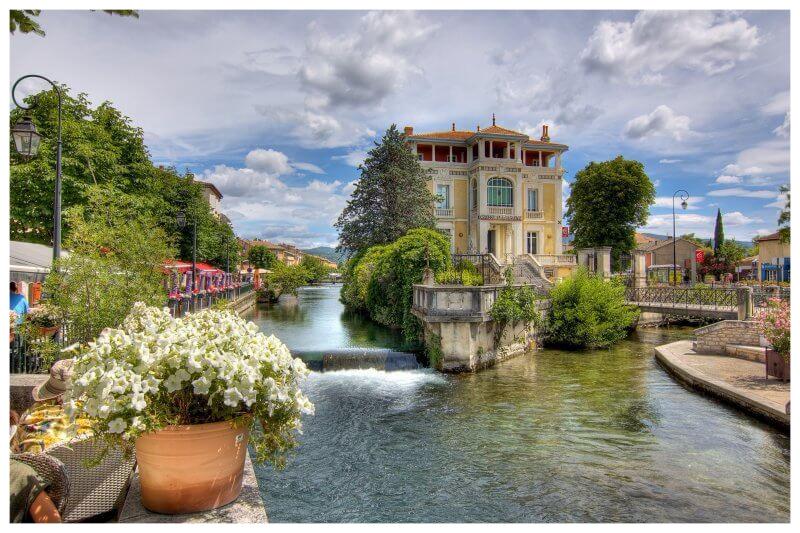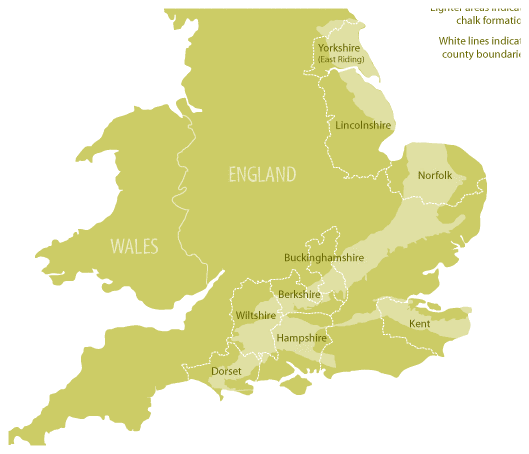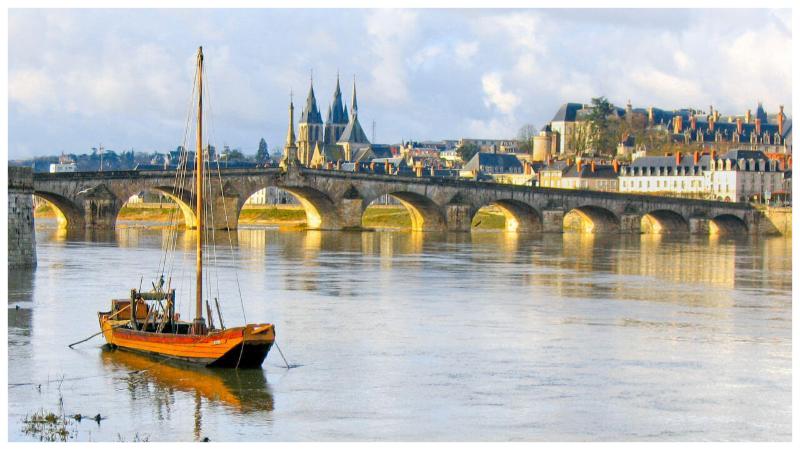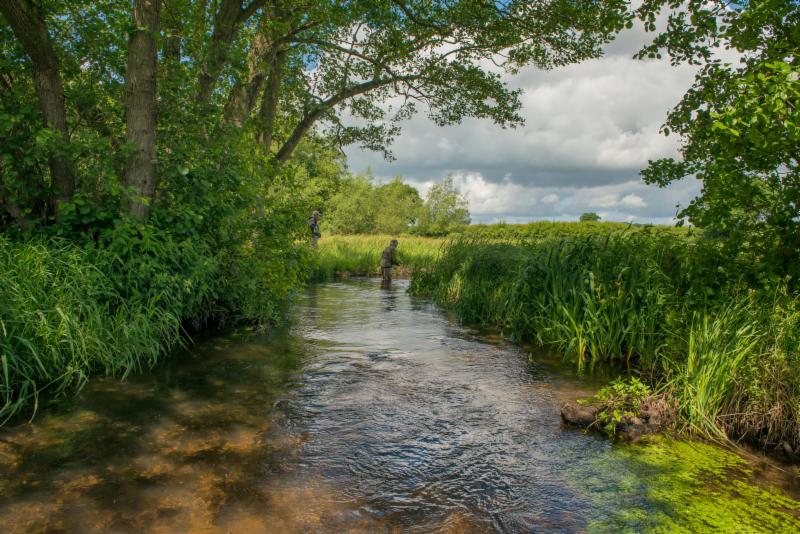Nether Wallop Mill, Hampshire, England - 23 February 2018
I am still not exactly sure why we did it; it seemed like a good idea at the time. What would be so difficult about fishing the compass extremes of the world's chalkstreams? As it so happens, it is more problematic than you might expect.
 |
|
Not a chalkstream?
|
Now, I think (all modesty
aside) I
know a thing or two about our unique rivers but finding the most northerly,
easterly, westerly and southern examples was more challenging than I expected.
Do you define by where an
individual river starts or where it finishes? Or perhaps by where the arc of
its flow takes it. How do you classify a river that starts as a chalkstream but
ends as something else? And if you do, where exactly is that point of
difference? Are maps the definitive guide to each and every chalkstream? Not
always. Are some so small as to be just technically a river? A trip took me to
the Isle of Wight where I could barely see the Cawl Bourne even though I was on
the bridge that straddled it. Was there any point fishing a river that was
patently unfishable? And most importantly how do you precisely define a
chalkstream?
On that last question I was
extremely fortunate to have the assistance of the Environment Agency's expert
Lawrence Talks and writer/conservationist Charles Rangeley Wilson. Both have
done many years of research on precisely this question, with maps and lists of
the English chalkstreams. There were a few points of difference but in the end
finding where to head - Yorkshire to the north, Dorset to the west and Norfolk
to the east - was relatively easily decided, give or take a few topographical
compromises. But as for the south ......
Now everyone wants to claim
a chalkstream; it is marketing gold. So, you'll find claims staked in New
Zealand, Russia, Slovenia, Belgium, Switzerland and Germany, plus plenty more I
probably never came across. I am sure many of these simply arise from mistaken
identity, plus a dose of wish fulfilment, for there are a great many rivers
that look and act like a chalkstream but are, in one or more important
characteristic, not the real deal. If you start from the basic premise "the
technical definition of a chalk stream is any river whose base-flow index (the
volume of river flow derived from groundwater aquifers) exceeds 75%, and whose
course runs over chalk geology" you will get some idea of the geographical
complexities involved.
 |
|
Extent of English chalkstreams
|
The fact is chalkstreams only
exist in two countries: England and France, the latter containing somewhere in
the region of a dozen. Unfortunately for me there was no French equivalent of
the EA or the Delphic voice of Rangeley Wilson to guide me. The best source I
could find was a tour of French rivers by English Nature in 2003 which starts
with the less than inspiring aim, and I quote, of 'understanding how rivers -
particularly SAC rivers nominated by Member States under EC Directive 92/43 -
are managed and protected in France'. It was useful but far from definitive.
Again and again in the
research I ran into the same problem - it looks like a chalkstream but it isn't
a chalkstream. I am sure plenty of you have travelled around Provence in the
south of France and admired the gorgeous limestone rivers in towns like
L'Isle-sur-la-Sorgue (pictured). But they are exactly that - limestone rivers
where the water arrives through fissures in the rock rather than being first
absorbed into porous chalk. It makes a difference. Often you'll notice a slight
'milkiness' to a limestone river which is in fact tiny particles of limestone
that the chalk would otherwise filter out.
So, I turned my thoughts
back north to concentrate on the well-known chalkstreams of Normandy such as
the Risle, a favourite of Frank Sawyer, and the Andelle. They seemed a good
enough solution but something kept nagging at me - champagne. If you travel
around the villages surrounding Stockbridge these days you'll see thousands of
acres of recently planted grape vines since it has been discovered that our
chalk downs are the geological twin of the Champagne region.
Actually it is wrong to call
them a twin, for one is really the continuation of the other. The chalk ground
that the Pinot Noir grape and the other two varieties favoured in champagne
making like to grow on is part of a seam that starts in Yorkshire, runs down
the east coast, jinks south west, disappears under the Channel (hence the Cawl
Bourne on the Isle of Wight) to reappear in Normandy until it finally peters
out in the Champagne region. And the river that follows more or less along the
Gallic leg is none other than the River Seine. All 482 miles of it. Could it be
that the river that runs through the centre of Paris is really the southernmost
chalkstream in the globe?
Next time in part 2: First
stop Yorkshire
RABBITS
BREED CONTROVERSY
Who knew rabbits could be so controversial? In the last quiz I
asked, 'Who imported the rabbit to the British Isles?' and gave the answer,
'The Normans from what is now northern France in the 12th century.'
Plenty of people
subsequently pulled me up, pointing out that the Romans had bought rabbits
to Britain and you are all entirely correct. The question I had intended to set
was who introduced rabbits to the wild (the
 |
|
Rabbit brooch. Metropolitan Museum of Art.
|
Roman ones were
domesticated) and hence my answer. It is generally accepted that had rabbits
existed in the UK between the Romans and the later introduction they would have
been noted in some form or another in the Domesday Book of 1085.
However, just
when you thought it was safe to put this one to bed I came across yet further
research that may prove all the above could well be wrong as it seems we have
proof rabbits lived here long before the Romans set foot on British soil as
remains of rabbits dating back half a million years were found at Boxgrove in
West Sussex and Swanscombe in Kent during digs in the 1980's and 1990's.
Palaeontologist
Simon Parfitt of the Natural History Museum, who worked on the Boxgrove dig, is
quoted as saying:
'We found all
sorts of animals - from the tiny ones like shrews and bats to huge ones like
elephants. All of these animals were living in the landscape and were buried
together. We also found remains of hares, and a rabbit's tooth. This was quite
a surprise, as previously the idea had been that rabbits were living in the
Mediterranean coastal regions - around Spain, Southern France and Italy. We
don't know if humans were eating the rabbits at this time - there's no evidence
of that yet.'
There is a very
long time gap between the Boxgrove and Swanscombe rabbits and the Roman
rabbit... almost half a million years. As far as we know no evidence has been
found of rabbits existing in Britain between those two dates. So what happened?
Probably the last Ice Age.
PHOTO
& VIDEO OF THE MONTH
 Photoshop
magic? No.
Photoshop
magic? No.
This is what happens when a
shark catches up with the bonefish on the end of your line. This was all that
was left of my friend's 7-9lb bone on a recent trip to East End Lodge in the
Grand Bahamas. I rather like the sort of perplexed look in the eye of the fish
that seems to be saying, "Is this really happening to me?"
And as for the video
, well I think
we may have got off rather lightly with just a shark .........
QUIZ
Hopefully I
have it all correct this time! As ever, all just for fun and the answers at the
bottom of the page.
 1) Which is the longest river
entirely in France?
1) Which is the longest river
entirely in France?
2) Alba is the ancient name for
which country in Great Britain?
3) The Latin name Galanthus translates to milk
flower. What plant is this?
Have a good weekend.
Best wishes,
Simon Cooper simon@fishingbreaks.co.uk
Founder & Managing Director
Quiz answers:
1) The
Loire at 629 miles
2) Scotland
3) Snowdrop


 Ten of thousands of houses have, or are being built, within what used to be regarded as Alresford's rural catchment. Now that is progress but when concrete replaces grass nature suffers. Rivers are sucked of water as aquifers are plumbed for domestic supplies. Of course the water doesn't 'disappear' but when it does return to the river it is as unclean run off or less-than-pure treated sewage water. In the short term a river can stand that, but in the long term? Well, think of it a bit like your garden - for a while it might survive if only watered by your washing up water, but in the end ...... Agriculture has also had a huge impact for in the 20th century it went from chemical free to chemical dependent; all manner of farming practices and crops, entirely absent or alien to the English countryside in previous centuries have become common currency.
Ten of thousands of houses have, or are being built, within what used to be regarded as Alresford's rural catchment. Now that is progress but when concrete replaces grass nature suffers. Rivers are sucked of water as aquifers are plumbed for domestic supplies. Of course the water doesn't 'disappear' but when it does return to the river it is as unclean run off or less-than-pure treated sewage water. In the short term a river can stand that, but in the long term? Well, think of it a bit like your garden - for a while it might survive if only watered by your washing up water, but in the end ...... Agriculture has also had a huge impact for in the 20th century it went from chemical free to chemical dependent; all manner of farming practices and crops, entirely absent or alien to the English countryside in previous centuries have become common currency.



 I am not sure when Ellen DeGeneres, American stand-up comedian, sitcom actress and latterly a hugely successful TV chat show host actually said this but it made me laugh out loud.
I am not sure when Ellen DeGeneres, American stand-up comedian, sitcom actress and latterly a hugely successful TV chat show host actually said this but it made me laugh out loud.  The bleak February countryside, shorn of all cover, is a great time to watch the local residents going about daily survival. These are who I see from my desk as I write this. As ever, all just for fun and the answers at the bottom of the page.
The bleak February countryside, shorn of all cover, is a great time to watch the local residents going about daily survival. These are who I see from my desk as I write this. As ever, all just for fun and the answers at the bottom of the page.